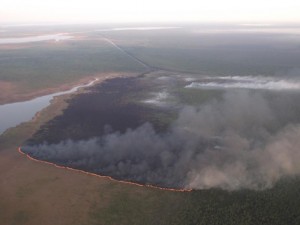Transcript below.
Tag: outer banks
On January 1, 2016, the Southern Fried Science central server began uploading blog posts apparently circa 2041. Due to a related corruption of the contemporary database, we are, at this time, unable to remove these Field Notes from the Future or prevent the uploading of additional posts. Please enjoy this glimpse into the ocean future while we attempt to rectify the situation.
I’ve been posting very sporadically due to spending the past month or so compiling all the data from the Marine Species Distribution Survey’s Cape Lookout leg. This was an exciting part of the survey for me because it brought me back to the waters I worked in while earning my PhD, so it a lot of ways it was like coming home. I happily took the lead on the apex predator portion of the survey so that’s mostly what I’ll be recapping first, but future posts will have more details on the trap, core, and genetic surveys.
Of course a lot has changed since then. For one thing, the ocean was two meters shallower, though parts of Beaufort and Morehead City used to flood at high tide even back in 2015. The biggest change may be the collapse and migration of many of North Carolina’s barrier islands, especially after Hurricane Monty rolled through ten years ago. In my mind I still picture Cape Lookout, now an island sitting by itself southeast of the Down East Banks, as part of a chain of barrier islands that once outlined all the North Carolina sounds. Core and Shackleford Banks are still on the map, but as shallow subsurface shoals that have a nasty habit of grounding whatever daring (or foolish) freighters still land cargo in Morehead City. They do draw in a lot of fish though, and still act as a sort of sill that allows Back and Core Sounds to function pretty much as shallow lagoons. If rumors of coral growth on some of the banks are true, it’s possible that the shoals could become fixed in place again.

In Beaufort, the first sign that something was amiss occurred on Sunday night. The air became thick with haze and smelled like of burning mulch. At first we thought it was just an overzealous barbecue somewhere down the road, but as we drove over the Morehead City highrise bridge, we discovered that the smoke was everywhere. This wasn’t an isolated grilling accident, trash burn, or house on fire, some thing was burning, something big. It could only be a forest fire, and, judging by the direction of the wind, it was blowing in from somewhere near the Outer Banks.
A documentary produced by Ashwin Bhandiwad and premiered at the Benthic Ecology 2010, enjoy! Shifting Sands: The Fight for the Outer Banks from Ashwin Bhandiwad on Vimeo.